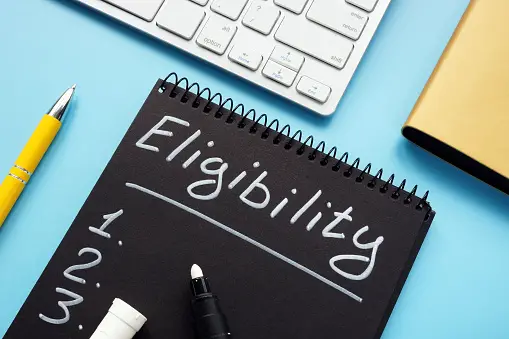Navigating the world of government grants can feel like a maze, especially if you’re not sure where to start. Understanding how to qualify for government grants is crucial for individuals, nonprofits, and businesses looking to access much-needed funding.
Whether you’re a nonprofit organization aiming to serve your community, a small business hoping to expand, or an individual pursuing a project that aligns with government priorities, securing a grant could be the key to turning your dreams into reality.
In this guide, we’ll walk you through the essentials of how to qualify for government grants, offering you the tools and knowledge to increase your chances of success.
Step 1: Understand What Government Grants Are
Government grants are financial aids provided by federal, state, or local government entities to support specific projects, research, or programs. These grants do not need to be repaid, which is a huge advantage over loans. However, competition for these grants is fierce, and the application process can be demanding. That’s why knowing how to qualify for government grants is vital for any applicant.
Step 2: Know the Different Types of Government Grants
There are several types of government grants, each designed for different purposes. Here are a few examples:
- Federal Grants: These are grants provided by federal agencies to support research, projects, and initiatives in areas such as education, healthcare, social services, and the arts. Federal grants are highly competitive and require applicants to meet specific eligibility criteria.
- State and Local Grants: These grants are provided by state and local governments. They are often targeted toward community development, local education initiatives, or small businesses.
- Nonprofit Grants: Many government grants are aimed at nonprofit organizations that work to address social issues, support education, or provide healthcare services.
- Business Grants: Entrepreneurs and small business owners can apply for government grants to start or grow their businesses, particularly in sectors such as technology, research, and environmental sustainability.
Each type of grant comes with its unique set of requirements, so understanding the type that aligns with your goals is an essential first step. Moreover, recognizing if there are special grants for underrepresented groups, veterans, or minority-owned businesses can also open additional doors for funding.
Step 3: Determine Your Eligibility
Before applying, you need to ensure that you meet the eligibility criteria for the grant you’re interested in. The most common eligibility requirements include:
- Purpose of the Project: Government grants are often awarded for projects that serve a specific purpose, such as scientific research, education, or public health. Make sure your project aligns with the grant’s goals.
- Legal Status: Some grants require you to be a registered nonprofit, a small business, or an individual with a specific legal status (e.g., U.S. citizen or permanent resident).
- Geographic Location: Many grants are restricted to specific geographic regions, such as a state or local community. Ensure your project falls within the scope of the grant’s geographic focus.
- Past Funding: Some grants require you to have a track record of successful funding. If you’re applying for a business grant, for example, the government may want to see proof of your ability to handle funding from previous projects.
- Financial Status: Some grants, especially those for nonprofits or small businesses, may require proof of financial need. Be ready to show your financial status, including income, assets, and liabilities.
Tip: Research eligibility criteria on grant portals like Grants.gov, which lists federal grants and their requirements. Local and state governments also have portals where you can find grant details and eligibility criteria.
Step 4: Register and Create a Profile
To qualify for most government grants, you need to register with the appropriate portals. Here are the most common platforms:
- Grants.gov: The primary source for federal government grants. You’ll need to create an account and register your organization or business before applying.
- SAM.gov (System for Award Management): For federal grants, you must be registered with SAM.gov. This registration is free, but it may take several weeks to complete, so plan ahead.
- State and Local Portals: In addition to federal registration, check if there are state and local government portals that require separate registration.
Having an account on these platforms is essential for submitting applications, and it allows grant makers to verify your eligibility and track your progress. Also, consider joining relevant online forums or local workshops where veteran grant seekers share their experiences and tips for navigating these systems.
Step 5: Write a Strong Proposal
Once you’ve determined your eligibility and registered on the necessary platforms, you’ll need to write a compelling grant proposal. This is the most crucial step in the process. Here’s what to keep in mind:
- Follow Guidelines: Every grant has specific instructions, such as the format, length, and required documents. Read the guidelines carefully and make sure you meet all the requirements.
- Clear Objectives: Your proposal should clearly define the objectives of your project. What problem are you solving, and how will you achieve your goals? Make your project easy to understand, even for those without expertise in your field.
- Measurable Impact: Grant makers want to know how your project will make a difference. Provide data, stats, and research to demonstrate the potential impact of your work. For example, if you’re applying for an educational grant, share statistics on how similar projects have improved educational outcomes. According to a study by the National Education Association, well-funded projects can increase graduation rates by up to 15%.
- Detailed Budget: Most grant proposals require a budget. Make sure your budget is detailed and realistic. Include costs for equipment, salaries, materials, and any other expenses related to the project. A clear budget not only shows your planning skills but also reassures funders that their money will be used effectively.
- Sustainability: Funders often prefer projects that are sustainable in the long term. How will you ensure the project continues after the grant money runs out? Be prepared to explain your long-term vision. If applicable, outline potential revenue streams, partnerships, or community support structures that can keep the project going.
Example Data: According to data from the U.S. Small Business Administration (SBA), 78% of small business owners who applied for government grants in 2023 successfully received funding, showing that having a well-prepared proposal significantly improves your chances.
Step 6: Submit the Application
Once your proposal is complete, submit your application according to the instructions. Pay attention to deadlines, and ensure that you have included all required documents.
Pro Tip: Some grants require you to submit additional documents, such as proof of legal status, financial statements, or tax records. Double-check to ensure that everything is included before submitting your application. Using a checklist can help manage these details efficiently.
Step 7: Monitor Your Application Status
After submitting your application, keep track of its status. Government grant processes can take several months, depending on the size and complexity of the grant. You can often track the progress of your application through the portals where you submitted it.
During this waiting period, it’s a good idea to research other potential grants you may qualify for, so you have more opportunities lined up. Additionally, consider volunteering or networking with others in your field to learn more about their experiences and strategies in securing grants.
Step 8: Respond to Feedback or Additional Requests
If your application is selected, you may be asked for additional information or clarification. Be sure to respond quickly and thoroughly. Government agencies are often busy, so staying on top of your communications can set you apart from other applicants.
Step 9: Understand the Funding Agreement
If you are awarded the grant, you’ll need to review and sign a funding agreement. This legal document outlines how the funds can be used, reporting requirements, timelines, and other important conditions. Make sure to:
- Read Carefully: Understand all terms and conditions before signing. If something isn’t clear, don’t hesitate to ask questions.
- Seek Legal Advice: If possible, have a lawyer review the agreement to ensure your interests are protected.
- Plan for Compliance: Set up systems to track expenditures, deliverables, and reporting deadlines as required by the grant.
Step 10: Implement the Project and Manage Funds
After receiving a grant, the next challenge is implementation. Effective project management and financial stewardship are critical:
- Project Management: Break your project into manageable tasks and set clear milestones. Regularly review progress and adjust plans as necessary.
- Financial Management: Keep detailed records of how funds are spent. Use accounting software or hire an accountant if necessary to ensure compliance with grant requirements.
- Reporting: Most grants require periodic reporting on how funds were used and the progress toward project goals. Timely and accurate reporting not only complies with the agreement but also builds a positive relationship with funders for future opportunities.
Additional Resources and Strategies
- Online Courses and Webinars: There are many free and paid online courses that teach grant writing and how to navigate government funding. Websites like Coursera, Udemy, and even local community colleges offer classes on these topics.
- Books and Guides: Consider reading books on grant writing and navigating government grants. Titles like The Only Grant-Writing Book You’ll Ever Need by Ellen Karsh and Arlen Sue Fox offer in-depth advice.
- Grant Writing Communities: Join online forums and social media groups dedicated to grant writing. Platforms like LinkedIn and Facebook host groups where members share tips, reviews of grant opportunities, and personal experiences.
Real-Life Success Story
To illustrate how understanding and following these steps can lead to success, consider the story of a small nonprofit organization in Ohio. The organization sought funding to build a community garden aimed at improving local nutrition and fostering community bonds. By carefully studying eligibility criteria on Grants.gov, the team discovered a relevant federal grant focused on community development.
They spent weeks crafting a proposal that clearly outlined their objectives, included community testimonials, a detailed budget, and sustainability plans for the garden’s future. After submitting their application, they regularly monitored its status, responded promptly to a request for additional details, and successfully secured the grant. Today, their community garden not only provides fresh produce but also hosts workshops, volunteer opportunities, and educational programs. This success was built on persistence, thorough research, and the right approach to qualifying for and obtaining a government grant.
Conclusion: Unlock Your Grant Success
Qualifying for government grants requires patience, attention to detail, and a solid understanding of the process. With the right information and preparation, you can increase your chances of success and access the funding you need for your projects. Whether you’re a nonprofit, small business, or individual, government grants offer incredible opportunities to bring your vision to life.
To enhance your success rates and stay ahead in the grant-writing process, don’t forget to subscribe to the Grant Writing Academy Newsletter. We provide tips, strategies, templates, and tools to guide you every step of the way. Join a community of grant writers and unlock your potential today!






